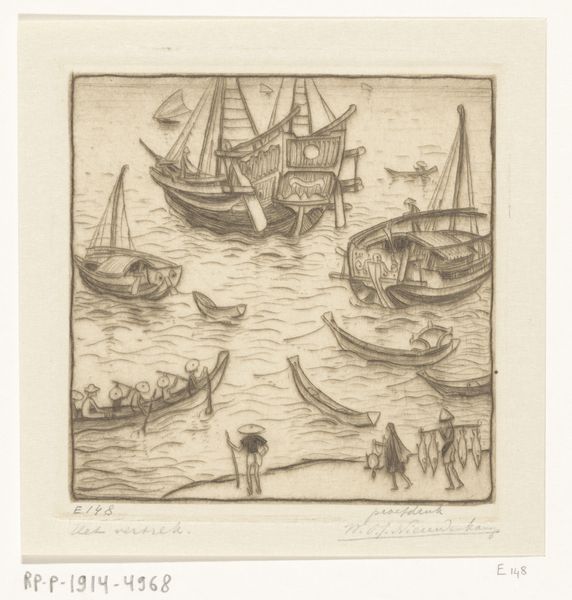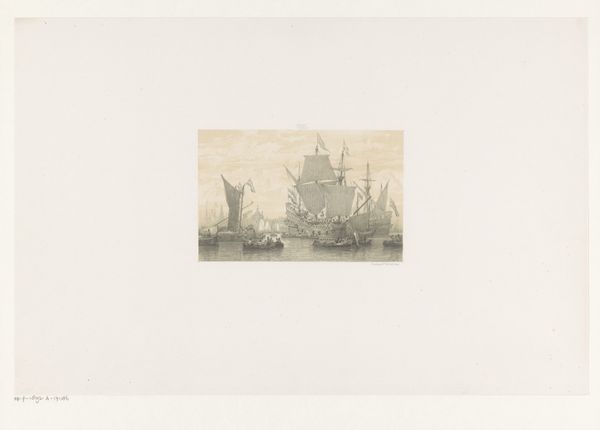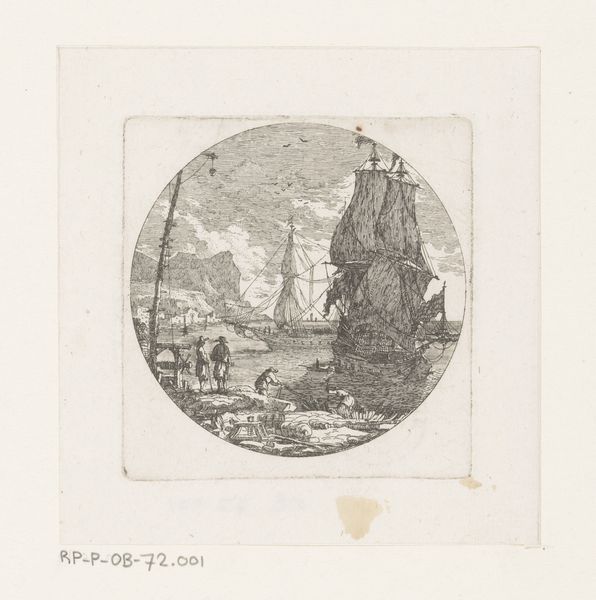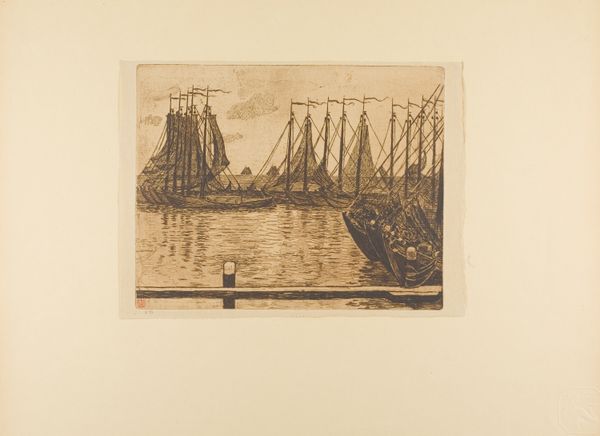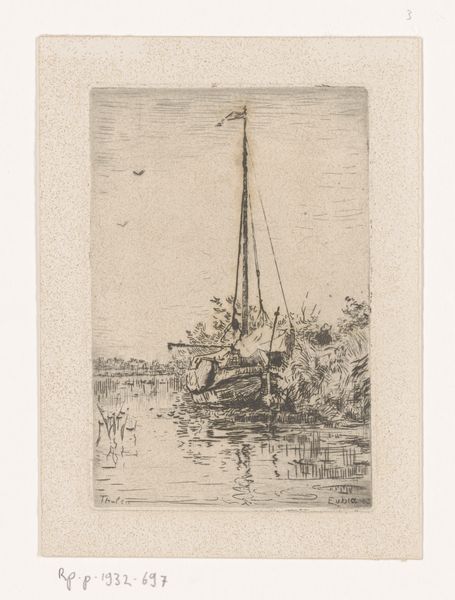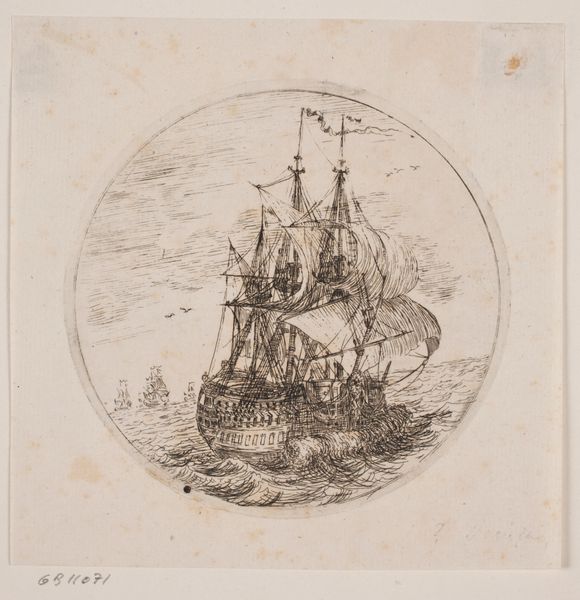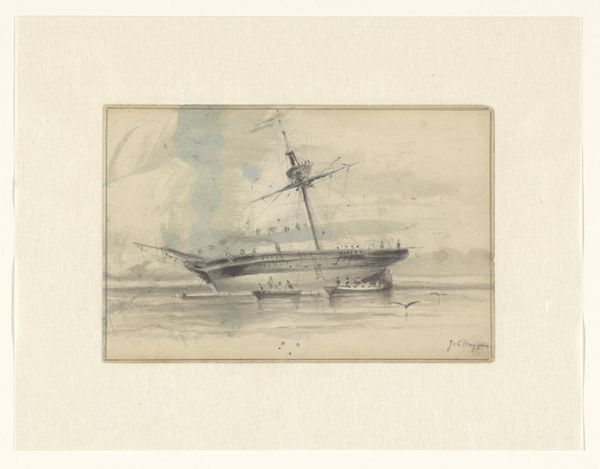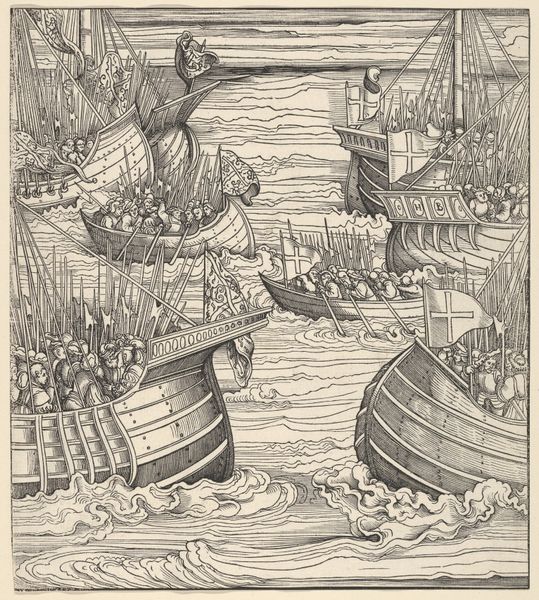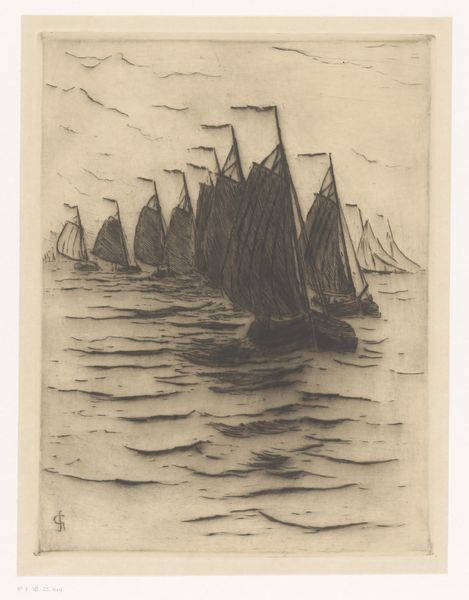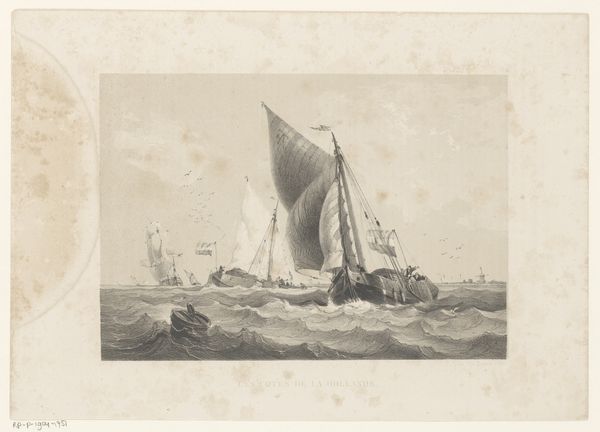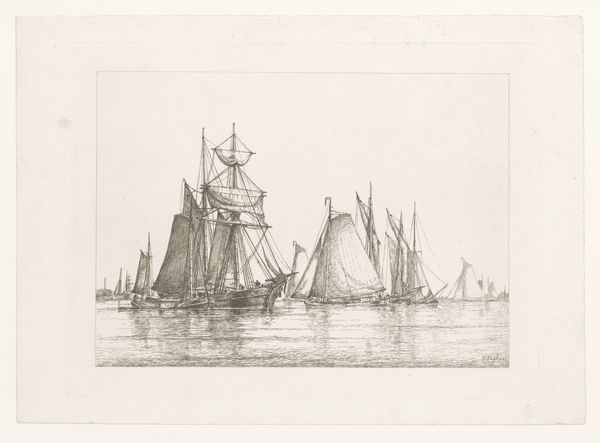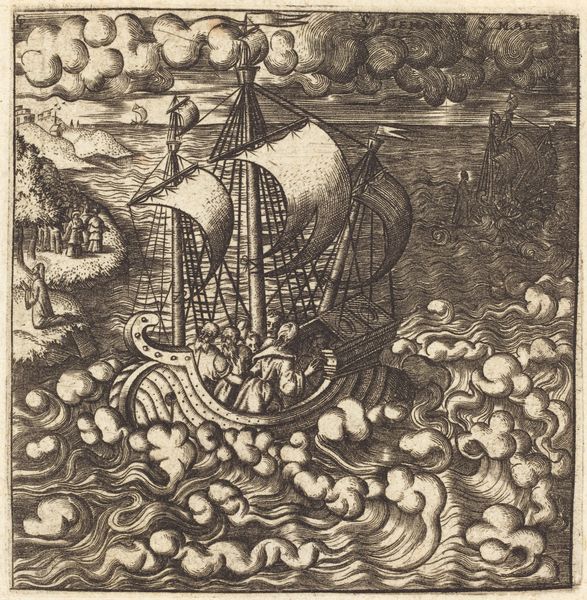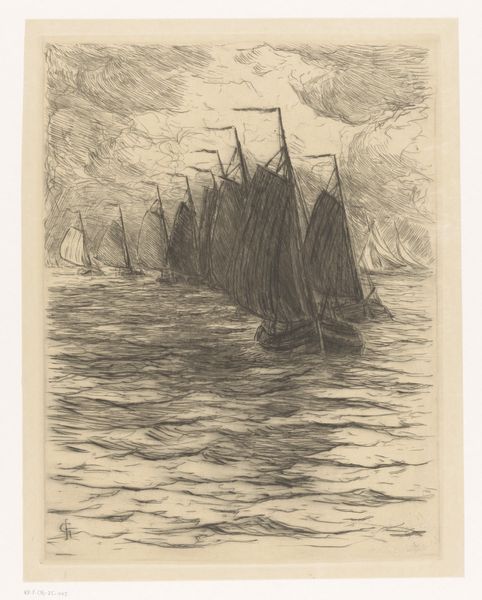
ceramic, earthenware
#
dutch-golden-age
#
ceramic
#
earthenware
#
genre-painting
Dimensions: 1 × 9 × 9 in. (2.54 × 22.86 × 22.86 cm)
Copyright: Public Domain
Editor: This charming piece, “No. 4” made around 1780 by the Porcelain Axe Factory, depicts a maritime scene on a simple earthenware plate. The blue and white imagery reminds me of Delftware. It feels… nostalgic, like looking at a memory. What do you see in this piece? Curator: This plate speaks volumes through its deceptively simple imagery. Delftware, yes, immediately places us in a Dutch Golden Age context, doesn't it? It represents prosperity, trade, exploration. But the ships…they're not merely vessels; they’re carriers of cultural memory. Look at how prominently they’re featured – notice any recurring visual elements? Editor: Well, the repetition of the ship motif, definitely, and the stylized waves, but… Curator: Think about the Dutch Republic at this time: maritime power. These ships symbolize not just trade routes and wealth, but a collective identity, national pride and the dissemination of cultural values. Every depiction reinforces that, doesn't it? Even today, those forms resonate. What feelings does that repetitive symbolism conjure for you? Editor: It's interesting to think about a plate as a tool for projecting power. It’s more than just decoration. Curator: Exactly! Consider how domestic objects acted as potent reminders of national identity, shaping a cultural narrative. They reflect deeply-held societal values in repeated symbolic forms, creating continuity. Editor: I hadn't thought about it that way before, but it does give a whole new depth to such a seemingly simple piece. Curator: It’s about understanding that every image carries a weight of history, emotion and intention. A plate can be a powerful vessel, just like the ships it depicts.
Comments
minneapolisinstituteofart about 2 years ago
⋮
This series of twelve plates is painted with scenes related to fishing for herring. While undistinguished in appearance, this silver fish was an abundant source of food in the North Sea and supported a vast fishing industry in the Netherlands. Herring fishing accounted for such a large percentage of the wealth of the Dutch Republic that Amsterdam was said to have been built on herring bones.
Join the conversation
Join millions of artists and users on Artera today and experience the ultimate creative platform.
